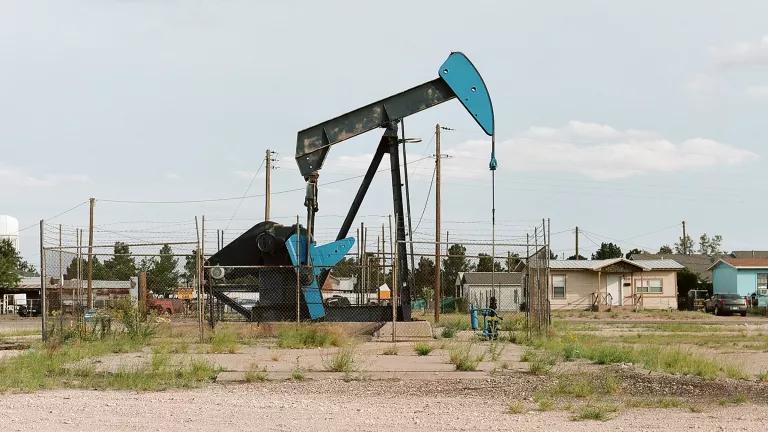The Crypto Industry Circulates More Climate Misinformation
Mining for Bitcoin uses more energy than most countries use annually and creates over 120 million pounds of electronic waste per year.
This week the New York Times published an important story about the significant pollution impacts that accompany some of the nation’s biggest Bitcoin mining operations. It is an important and galling story—but in some ways, the response to it is even more interesting. Perhaps you have seen the tongue-in-cheek video making rounds on social media from a crypto company trying to refute the story? It garnered more than a million views in just a couple days. The video follows a straight-faced guy in a hard hat with a portable air monitor taking readings outside of a crypto mining facility and then next to massive server banks inside, while noting his readings show no uptick in CO2 levels (while ironically noting historic CO2 levels in the atmosphere outside).
Regardless of its intentions, the video is a clear extension of the industry’s pollution rhetoric and makes light of their serious environmental and climate impacts. Some crypto voices loudly deny any climate impact from their operations, playing semantic games around their operations “releasing no pollutant.” Even if the video is a spoof, the accompanying press release is not. It notes high levels of renewables on the Texas grid, while denying any negatives associated with the fossil fuel emissions—and echoes the rhetoric about non-impact.
But make no mistake, there is a LOT of impact.
I’ve blogged on it before. Although the crypto industry disputes the claims about how Bitcoin networks are profligate consumers of energy and carbon intensive, existing data does not support their objections. Most crypto mining companies still use a heavily fossil fuel-based electricity mix. More contentiously, counter to the crypto industry’s claim of going green, crypto mining firms have started resurrecting discontinued fossil fuel assets to power their operations, giving them easy access to cheap energy.
To ensure that the crypto mining industry stays on the right track in terms of energy consumption and the environment, last month Senator Ed Markey of the Senate Subcommittee on Environment and Public Works held a hearing on “Air, Climate, and Environmental Impacts of Crypto-Asset Mining”, where my colleagues and I submitted a statement for the record in support of creating more transparency in the crypto mining industry and assist them in reducing their energy consumption, carbon emissions, and environmental footprint. Our testimony and the hearing highlighted these concerning impacts:
-
The energy consumption of the proof-of-work (PoW) protocol is enormous and must shift to a less energy-intensive protocol. — PoW is the Bitcoin mining method that pits pools of miners against one another, with the pool that expends the most computational effort receiving the highest probability of collecting the financial rewards.
-
The physical components that run the protocols for mining crypto assets are major sources of e-waste. —accounting for over 120 million pounds of electronic waste per year.
-
Communities lured in by the economic prospects of crypto mining often suffer adverse environmental and economic impacts with few benefits.
-
The crypto industry’s claims of positive energy or climate impacts are largely unproven. meanwhile, the industry annually consumes more energy than most countries!
Getting a better understanding of the environmental impacts of crypto asset mining will help policymakers ensure that when crypto assets are created, they are done so in an environmentally responsible, equitable, and just manner. This bill is an important first step in obtaining the data needed to understand the environmental and climate impacts of the crypto asset industry. We need to procure the data so that we can begin to address the major issues in the industry that have an adverse effect on the environment and help our nation achieve its climate and clean energy goals.






